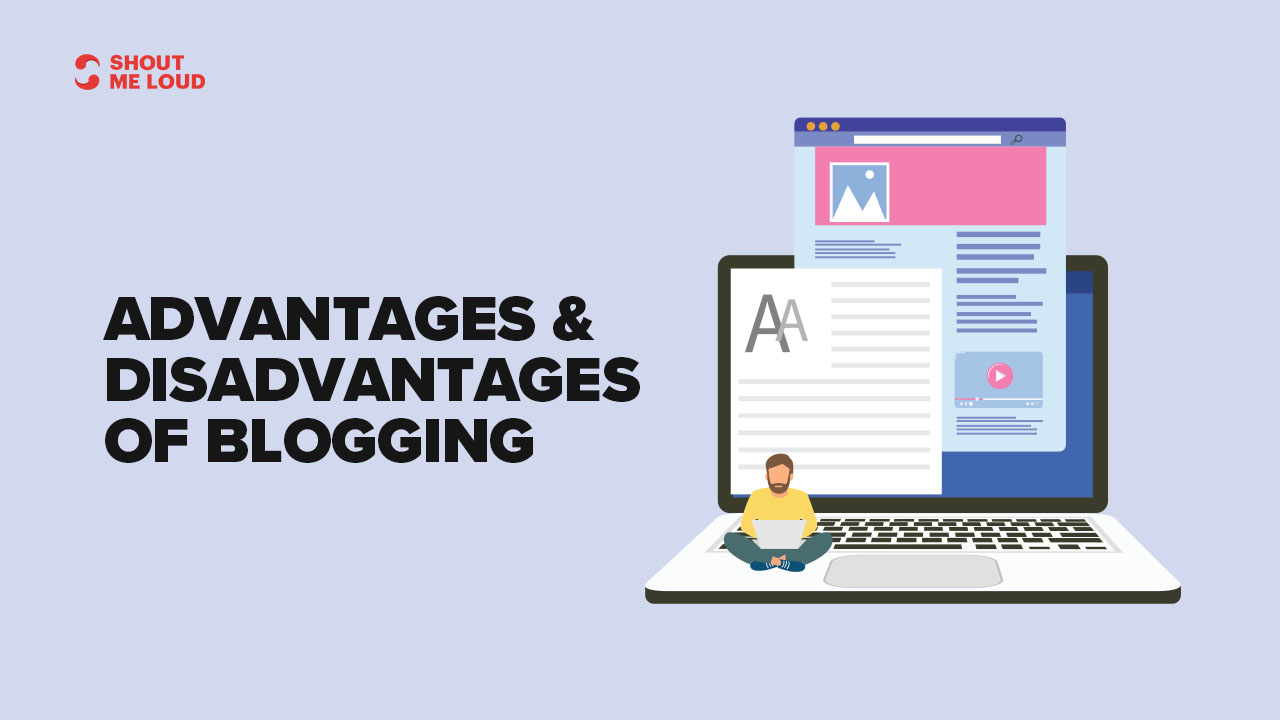The Pros and Cons of Using AdSense on Your Personal Blog
The Basics of AdSense for Bloggers
If you’re a blogger looking to monetize your site, AdSense is one of the most popular options. AdSense is a program run by Google that allows you to display ads on your website and earn money when visitors click on them.
Getting started with AdSense is relatively straightforward. Here are the basic steps:
- Create a Google Account if you don’t already have one.
- Apply for an AdSense account by filling out the application form and agreeing to the terms and conditions.
- Once your application is approved, you’ll need to add the AdSense code to your website. You can do this manually or by using a plugin if your website is built on a platform like WordPress.
- Once the code is added, AdSense will start showing ads on your site. You can customize the appearance and placement of the ads to fit your site’s design and layout.
- Earn money when visitors click on the ads. The amount you earn will depend on factors like the ad’s relevance to your content and the advertiser’s bid for the ad space.
While AdSense can be a great way to earn money from your blog, there are also some potential drawbacks to consider. In the next section, we’ll explore the pros and cons of using AdSense on your personal blog.
The Pros of Using AdSense on Your Blog
As a blogger, you may be wondering if using AdSense is worth it. Here are some of the top benefits of using AdSense on your personal blog:
1. Easy to Use: AdSense is a user-friendly platform that is easy to set up and manage. Once you add the AdSense code to your website, Google takes care of the rest. You don’t have to worry about finding advertisers or negotiating deals.
2. Passive Income: With AdSense, you can earn money without putting in a lot of effort. Once the ads are set up on your site, you can sit back and watch the earnings roll in. This makes AdSense a great option for bloggers who want to earn passive income.
3. Large Advertiser Base: Google has a vast network of advertisers, which means that you have access to a wide range of ads. This increases your chances of getting relevant ads that are a good fit for your blog.
4. Customizable: AdSense allows you to customize the appearance and placement of the ads on your site. You can choose from a range of ad formats and sizes to fit your site’s design and layout.
5. AdSense Analytics: AdSense provides you with detailed analytics that show you how your ads are performing. This allows you to make informed decisions about how to optimize your ads for maximum revenue.
6. No Minimum Traffic Requirements: Unlike other advertising networks, AdSense doesn’t have any minimum traffic requirements. This means that even if you have a small blog, you can still use AdSense to monetize your site.
Overall, AdSense is a great option for bloggers who want to earn passive income without putting in a lot of effort. However, there are also some potential downsides to using AdSense, which we’ll explore in the next section of this article.
The Cons of Using AdSense on Your Blog
While AdSense has many benefits, there are also some potential drawbacks to consider before deciding to use it on your personal blog. Here are some of the cons of using AdSense:
1. Limited Control Over Advertisements: While Google allows you to customize the appearance and placement of the ads on your site, you don’t have complete control over the content of the ads themselves. This means that you may end up displaying ads that are not relevant to your content or that you don’t necessarily endorse.
2. Ad Blockers: Many internet users today use ad blockers to avoid seeing advertisements. This means that a significant portion of your audience may not even see the ads that you’re displaying, which can significantly reduce your potential earnings.
3. Low Click-Through Rates: Even if your audience sees the ads, there is no guarantee that they will click on them. Click-through rates (CTR) can be quite low for AdSense ads, depending on factors like the ad’s placement, relevance, and quality.
4. Revenue Sharing: While AdSense allows you to earn money from your blog, Google also takes a cut of the revenue. The exact percentage varies, but it can be as high as 32% of the ad revenue generated by your site.
5. Strict AdSense Policies: Google has strict policies regarding the types of content that are allowed to display AdSense ads. If your site violates any of these policies, your AdSense account may be suspended or terminated, which can significantly impact your earnings.
6. Slow Payment Process: AdSense payments are made on a monthly basis, but there can be delays in receiving your earnings. Additionally, there is a minimum payout threshold that you must reach before you can receive payment.
Overall, while AdSense can be a great way to earn passive income from your blog, it’s important to weigh the potential drawbacks against the benefits before deciding to use it. If you’re looking for alternative ways to monetize your blog, there are several other options available, which we’ll explore in the next section of this article.
Maximizing AdSense Revenue on Your Blog
As a blogger, you want to make the most out of AdSense and maximize your revenue potential. Here are some tips to help you increase your earnings with AdSense:
1. Optimize Ad Placement: The placement of your ads can have a significant impact on your click-through rates and revenue. Experiment with different ad placements to find what works best for your site. Some of the most effective ad placements include above the fold, within the content, and at the end of the article.
2. Use Responsive Ads: Responsive ads are designed to adjust to the size of the user’s screen, making them more user-friendly and effective. Make sure to enable responsive ads to ensure that your ads are displayed optimally on all devices.
3. Experiment with Ad Formats: AdSense offers a variety of ad formats, including display ads, text ads, and link units. Experiment with different ad formats to see which ones perform best on your site.
4. Focus on High-Paying Keywords: AdSense earnings are heavily influenced by the keywords used in your content. Focus on using high-paying keywords in your content to attract ads with higher bids.
5. Increase Your Traffic: The more traffic your site receives, the more potential clicks and revenue you can generate. Focus on increasing your site’s traffic through strategies like SEO, social media marketing, and guest blogging.
6. Use AdSense for Search: AdSense for Search allows you to add a custom search box to your site and earn money from searches made by your visitors. This can be a great way to increase your AdSense earnings.
7. Monitor Your Analytics: AdSense provides detailed analytics that can help you optimize your ads for maximum revenue. Monitor your analytics regularly and make adjustments as needed to improve your earnings.
By following these tips, you can increase your AdSense revenue and make the most out of this popular monetization option. However, it’s important to remember that AdSense is just one option for monetizing your blog. In the next section, we’ll explore some alternative ways to earn money from your blog.
Alternatives to AdSense for Monetizing Your Blog
While AdSense is a popular option for monetizing your blog, there are also several alternative options available. Here are some of the top alternatives to consider:
1. Affiliate Marketing: Affiliate marketing involves promoting products or services on your site and earning a commission for any sales made through your unique affiliate link. This can be a great way to earn passive income from your blog. Some popular affiliate marketing programs include Amazon Associates, ClickBank, and ShareASale.
2. Sponsored Content: Sponsored content involves partnering with brands to create sponsored posts or reviews on your blog. You can earn money by charging brands for sponsored content or by receiving free products or services in exchange for your review. However, it’s important to disclose sponsored content to your audience to maintain transparency.
3. Selling Digital Products: If you have expertise in a particular area, you can create and sell digital products such as ebooks, courses, or printables on your blog. This can be a great way to earn passive income while also establishing yourself as an authority in your niche.
4. Display Advertising Networks: In addition to AdSense, there are several other display advertising networks available, such as Media.net, PropellerAds, and AdThrive. These networks offer similar services to AdSense but may have different requirements or payout structures.
5. Membership Programs: If you have a loyal audience, you can create a membership program that offers exclusive content, perks, or access to your community in exchange for a monthly or yearly fee. This can be a great way to earn recurring income from your blog.
It’s important to find the monetization option that works best for your blog and audience. Consider experimenting with different options and tracking your earnings to find the most effective strategy. Remember, the key to successful monetization is providing value to your audience while also earning income from your blog.
Final Thoughts on AdSense for Personal Blogs
In conclusion, AdSense is a popular and user-friendly way to monetize your personal blog. It offers a passive income stream and a large network of advertisers. However, it’s important to weigh the potential drawbacks, such as limited control over advertisements and strict policies, before deciding to use AdSense on your site.
To maximize your AdSense revenue, focus on optimizing ad placement, using responsive ads, experimenting with ad formats, and increasing your traffic. Additionally, consider alternative monetization options such as affiliate marketing, sponsored content, selling digital products, display advertising networks, and membership programs.
Ultimately, the key to successful monetization is to provide value to your audience while also earning income from your blog. Remember to always prioritize the user experience and maintain transparency with your audience. By finding the right balance, you can turn your personal blog into a profitable and rewarding venture.














 Over 10 years of experience in managing all size of tech projects.
Over 10 years of experience in managing all size of tech projects.